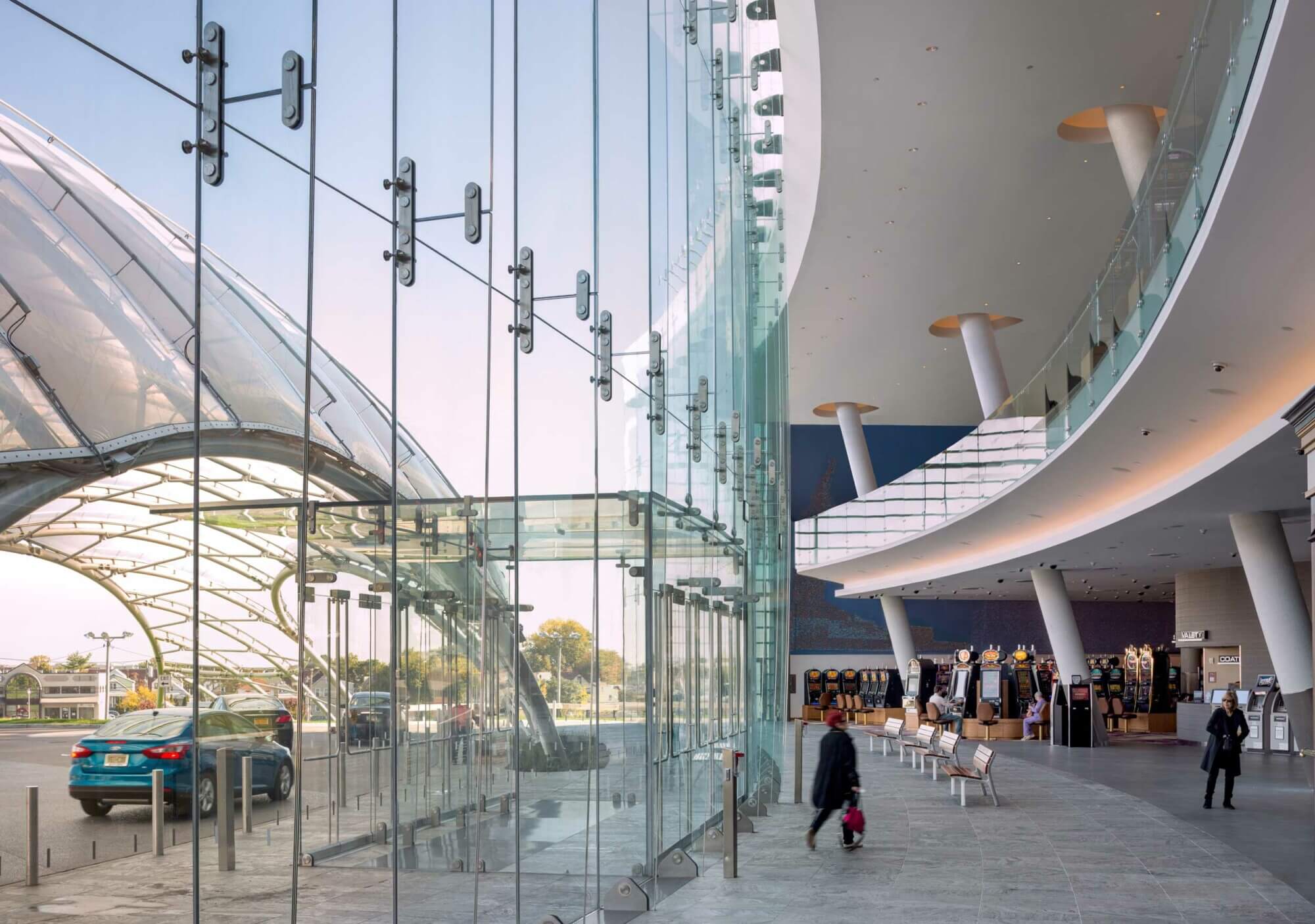Casino gambling, a potent engine of wealth redistribution from the hopeful to the fortunate, is moving from a handful of dedicated sites into America’s larger cities. With more states legalizing more forms of gambling and the casino sector responding robustly to competition from online betting, this type of entertainment has outgrown its traditional localized base culturally, economically, and physically. As New York joins Philadelphia, Baltimore, and other cities as sites of urban casinos, residents will soon discover how much the industry can change a neighborhood and perhaps how urban settings can change the industry.
The mainstreaming of these pastimes affects their architectural and urbanistic aspects. Two familiar models of the casino as a building typology—the decorated sheds from which readers of Robert Venturi, Denise Scott Brown, and Steven Izenour have been learning since 1972 and the Native American–owned complexes that have appeared since the 1980s, often large-scale and at a distance from major cities—are now joined by a third variant: the urban casino, potentially as upscale as certain overseas models (Monaco or Macau) and situated where they are far from being the only game in town.
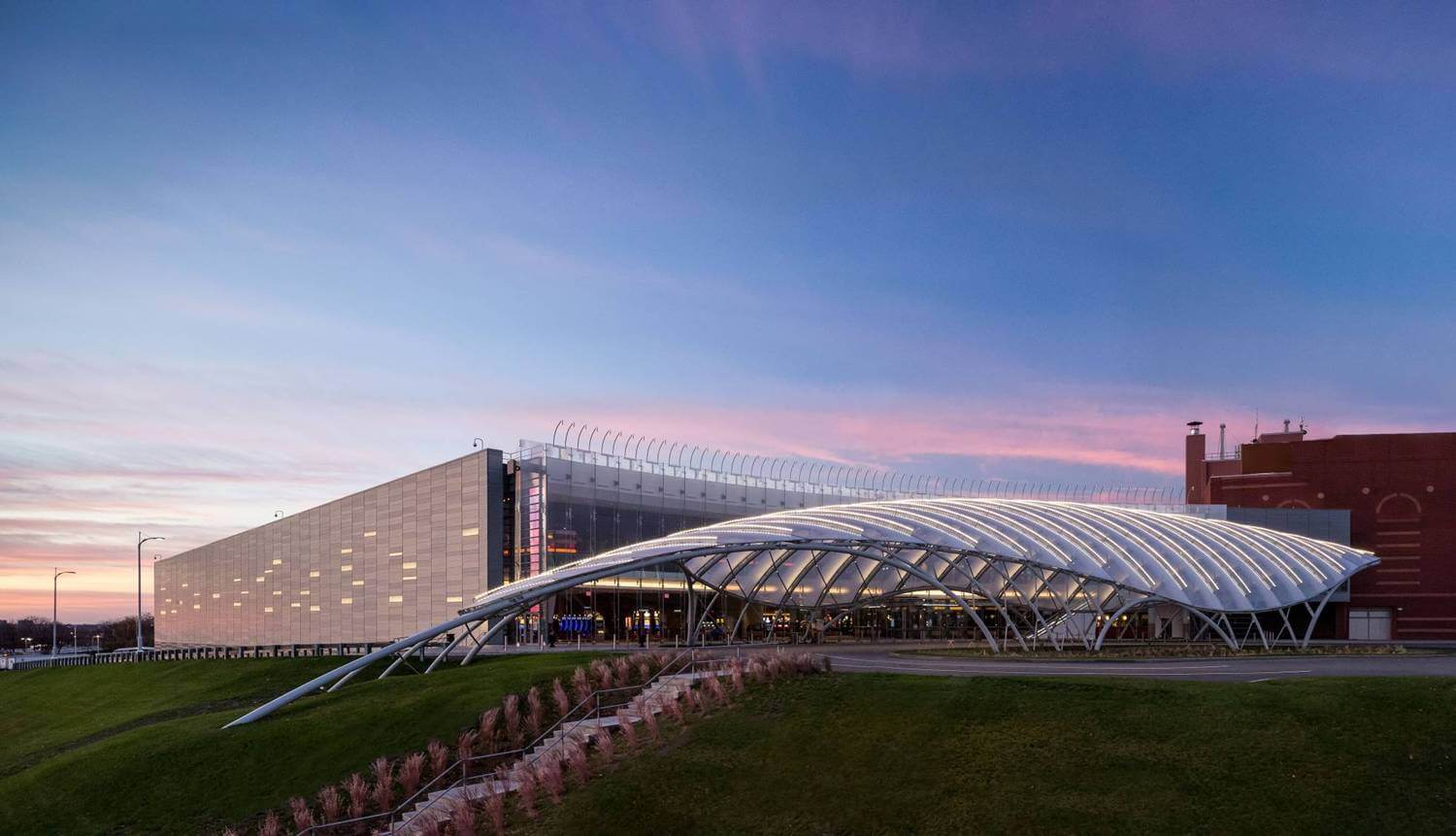
Legal Pariahs No More
The spread of legal sports betting after 2018, when the Supreme Court struck down the federal Professional and Amateur Sports Protection Act, has accelerated the industry’s expansion. New York’s state legislature raised the stakes in 2022 by authorizing licenses for up to three full (Class III) casinos in the downstate region, which includes metropolitan New York City and Long Island. (Four upstate casinos have been operating since legalization in 2013.) A three-person Gaming Facility Location Board is overseeing the selection process and consulting community committees formed to assess local support for each application; a request for applications went out in early January with no deadline but with a $500 million licensing fee and an expectation that a proprietor will invest at least that amount in the project.
Under post-COVID conditions where work and play have remained in a hybrid format, new casinos need to expand beyond the thrill of the action per se and offer patrons reasons to congregate at specific places, while also offering communities reasons to welcome them. Competition is becoming fierce over which places these will be. Local sites under consideration include the established racinos in Queens (Genting Group’s Resorts World NYC) and Yonkers (MGM Resorts International’s Empire City), believed to be front-runners for two of the full-casino licenses. For the third, proposals to date, ranging from announced partnerships to media speculation, include the undeveloped western segment of Hudson Yards (Related Companies/ Wynn Resorts), 1515 Broadway in Times Square (SL Green/ Caesars Entertainment), Coney Island (Thor Equities/Saratoga Casino Holdings/Chickasaw Nation/Legends), a 6.7-acre lot near the United Nations (Soloviev Group/ Mohegan), Nassau Veterans Memorial Coliseum in Uniondale (Las Vegas Sands), and the upper floors of Saks Fifth Avenue’s midtown flagship (Hudson’s Bay Company).
Additionally, Vornado Realty is reportedly considering seeking a casino license as part of its controversial plan to demolish the Hotel Pennsylvania, and in January Mets owner Steven Cohen invited Queens residents for a community discussion about a possible casino for Willets Point. The longest shot may be the bruited replacement of a Bronx golf clubhouse by a Bally’s casino, contingent on removing from the property the name of a locally unpopular figure (and former White House occupant) with well-publicized ties to organized crime.
New York City’s embrace of casinos is part of a sustained national trend. Texas legislators are considering whether to give voters a chance to legalize casinos this November, and Chicago’s city council and alderpeople have approved a riverfront Bally’s project, designed by SCB, as part of a multiphase, multipurpose development. (State licensure is still pending.) Montana, Louisiana, and Oklahoma each have over 100 casinos; casinos began opening in the four largest cities in Ohio (Cleveland, Cincinnati, Columbus, and Toledo) in 2012, after a 2009 state constitutional amendment; and six have opened across Maryland during the same period. The American Gaming Association (AGA) reports that all but six states have commercial gambling (in a total of 466 casinos), tribal gambling (515 casinos), or both, and commercial casinos have broken gross revenue records for the past two years, crossing the $60 billion threshold in 2022. Tribal revenues, tracked separately, are not far behind, at $39 billion for 2021.
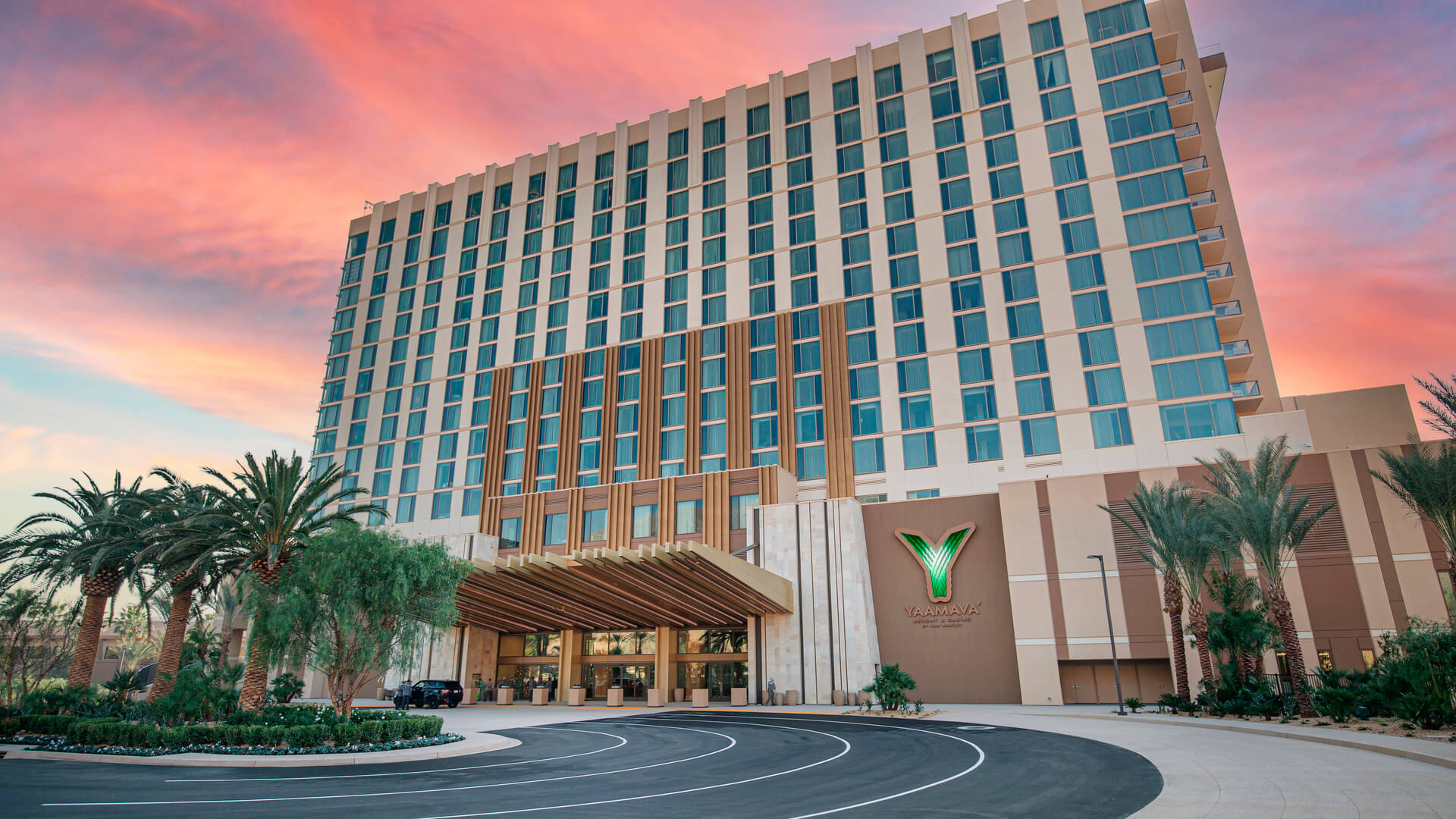
Casinos’ prodigious influence can bleed an area’s economy dry, as historians have argued happened to Atlantic City. Backlashes have happened: In 2000 South Carolina ended its experiment with video poker (“hard- core, grab-the-paycheck gambling” associated with graft and widespread addiction but lacking the offsetting benefits of casino construction and hotel employment, according to an activist quoted in both Harper’s and Slate the previous year) and reverted to a near-total gambling ban, allowing it only on offshore cruises. An extensive social-science literature correlates high rates of problem gambling with proximity to casinos, and as Stephen Marche put it in a 2021 Atlantic overview of gambling’s expansion into sports and the economy at large, “Gambling produces corruption the way salt water produces rust. You can fight it for a while, but it wins in the end.” Yet casinos and governments can also redirect the resources more constructively, and acceptance within competitive environments arguably compels them to do so. Proponents point to the public revenues and private-sector jobs they generate, potentially offsetting the social problems cited by detractors.
From the Manipulative Space to the Integrated Resort
The gambling industry, rebranded as gaming at least since the AGA’s founding in 1994, has been evolving from stigmatization toward a family-friendlier image with broader entertainment options. Architects with experience in casino design have observed a corresponding shift in priorities and forms. Mark Yoshizaki, senior vice president at the global hospitality design firm WATG (formerly Wimberly Allison Tong & Goo), described to AN a shift from old-school spaces exemplifying hostile design—short on windows, clocks, intuitive circulation, and signage, built to maximize players’ time at the tables—toward more of a playground model, the integrated resort (IR), conducive to longer stays (three or four days) by broader populations. In IRs, distinct pathways allow underage people and other nongamblers to bypass casino floors, and amenities include hotels, restaurants, retail, live performances, pocket parks, and youth-oriented attractions. As in a city, betting in an IR is only one draw among many.
“I did start my game experience in Las Vegas, in the heart of where all the gaming is; it has a certain vibe to it,” Yoshizaki recalled. “There [are] no beaches; there’s nothing to be said of as far as the surrounding areas…. In Vegas, everything drives traffic through the casino floor for every nickel you can get. But in these urban IRs, it’s more important to make sure you’re respecting the community as a whole.” In one new IR, the Yaamava’ Resort in suburban Highland, California, east of Los Angeles, WATG added a 17-story, 432-room hotel, a 2,800-seat theater, and other luxury features to the former San Manuel Casino, once a small bingo hall, taking steps to broaden its appeal and control effects on nearby residences and schools. The casino and tribe (the San Manuel Band of Mission Indians) have committed gaming-floor earnings to a local tax program, Yoshizaki says, funding access roads, streetlights, and emergency services.
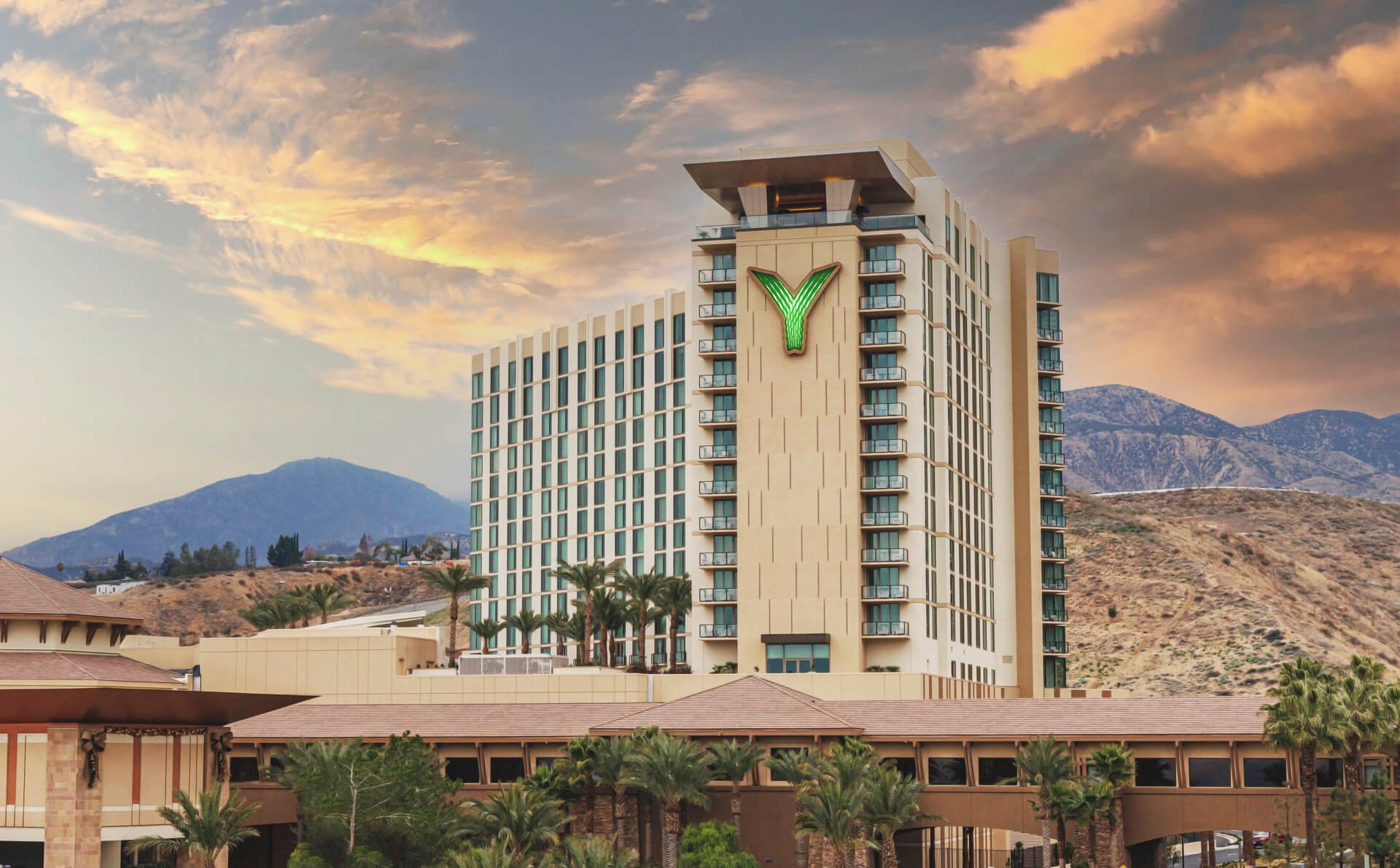
“When you get into urban areas for casinos, there has to be a very careful consideration of where those gamblers are coming from,” Yoshizaki continued. When local residents are the main customer base, “you’re not really drawing any new money into the cities,” but in a project designed, scaled, and located to attract out-of-state and international travelers, outside a central city or in a tourism district, “that’s where you can really benefit from getting the tax revenues, because it’s new money; it’s outside money.” (This is where designers can learn from overseas casinos with private spaces dedicated to the “whales,” or wealthy, high-stakes players.) Planners must also consider how the gamblers are coming: a transit-accessible site, perhaps on a city’s perimeter, “is seen more as an underutilized entertainment zone that has potential to add to its already fairly reputable amenity base, so we see that as a good draw to reduce the amount that happens in the heart of the cities. We’re not adding car traffic or anything to the inner cities.”
To compete with online games and “pull people out of their chairs,” Yoshizaki recommended designing IRs with both positive attractors in the form of diverse experiences and operational features that can deter the inevitable “negative elements [that] are somehow attracted to these venues”: well-lit sidewalks, video screening, satellite security stations, and open spaces. “At least to tribes and the gaming operators that I’ve worked with,” he summarized, “I’ve always felt like I’m helping to create a more positive environment, to help eliminate those negatives that come along with it with great design. Having a blend of hospitality interlaced into the gaming environment creates a better offering than just gaming for gaming’s sake.”

A Racino Grew in Yonkers
Jay Valgora, founder and principal of STUDIO V, worked on the Empire City Casino at Yonkers Raceway, where a 45-foot glass wall and a porte cochere of curving, latticed steel covered with ethylene tetrafluoroethylene (ETFE) foil give the casino area a rare level of transparency. The shed/box model for gambling spaces, he said, “is completely cut off from its surroundings, has no relationship to its community, no relationship to time or space, and basically is decorated to try to create a theme or an idea to distract you from reality.” Rather than isolate patrons, he preferred to connect them to the site and its history: the garden elements of the surroundings, the cable-stayed canopies of an earlier iteration of the building, and a sculptural form that “leaps out of the hillside and actually grows out of the topography of the site…. It’s not an alien intervention; it really grows from the nature of the place, and I think that if we do a new casino for New York, it should have the same effect.”
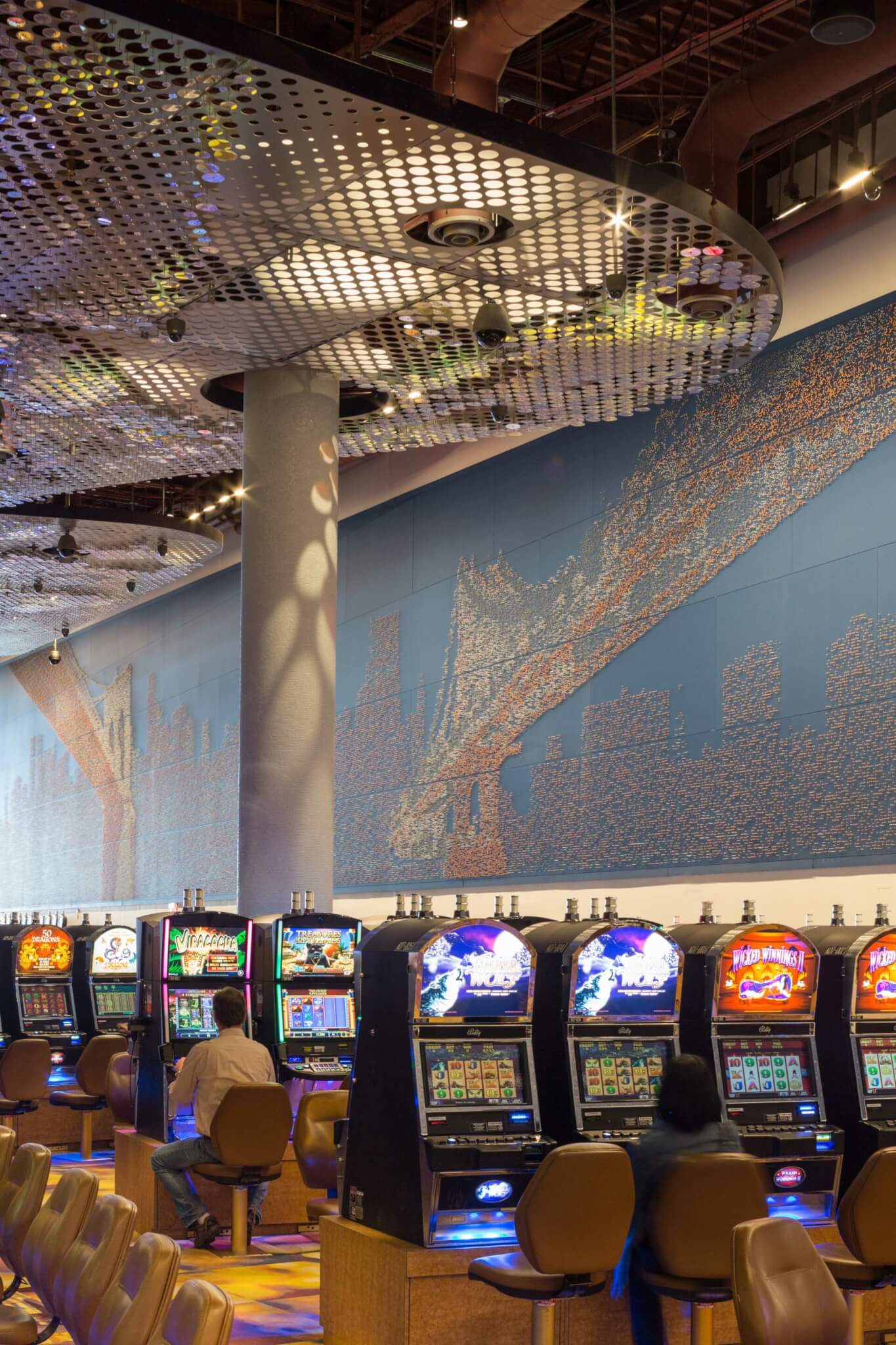
“The urban casino should be a spectacle,” Valgora contended. “I think New York City is deserving of a better casino. We need something from a design point of view that absolutely cannot be the straight-out-of-the-box Las Vegas.” Instead, the city’s casinos should present “an urban spectacle that’s all about the arrival of people, the enjoyment of the activities, people gaming, people dining, people eating, people arriving, coming and going, creating the choreography and the drama of arrival…. I think these are all elements of the new urban casino.” He continued: “I love how we could update Learning from Las Vegas, where instead of being inspired by roadside architecture and using that as a design tool, we’re now inspired by the nature of the city itself.” In this example, the inspiration translates into broad glazing rather than artificially lit black-box enclosures; vertical stacks of activities rather than a single horizontal gaming floor; and site-specific artwork like Empire City’s “80,000 polycarbonate panels, [an] abstraction of the skyline of New York City” rather than replicas “trying to make it look like Paris or Polynesia or Rome.”
The city’s best entertainment venues, Valgora noted, “have very little lobby space; they always project their energy onto the exterior through marquees,” using streets themselves as lobbies and functioning as a “machine for interaction of people.” At Yonkers or at other local sites, he would like to see casinos respect the grid, “the one element of New York that must survive above all else.” Valgora offered that “the opportunity of a casino or an entertainment complex [is] to address the edges of the city, and if it can actually connect them together and unite them, then I think it would succeed…. The cityness of New York is completely inescapable, and the urban casino must embrace that.”
Developing an urbane, neighborly, connected casino model, Valgora suggested, is a logical next step in the city’s long-running dialectic between order and energy. “The notion of modern architecture originally tried to destroy the city,” he said. “Modern architecture now is making our cities more sustainable, more green, more resilient. I wonder if there is a way that modern architecture, through gardens, light, glass, relating to time and place, can actually even tame the casino.”
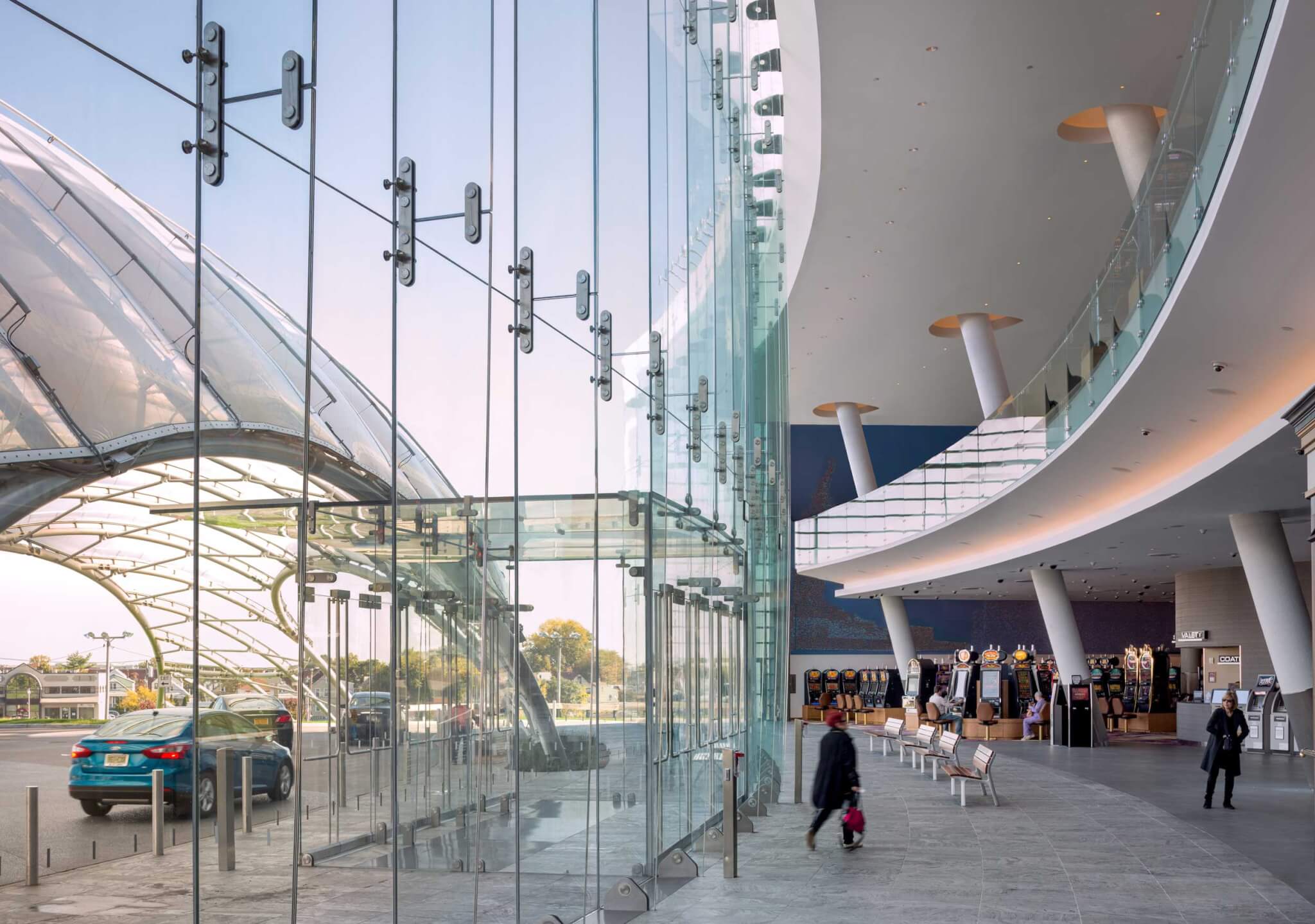
The policy component of that effort involves ensuring that the wealth these businesses channel becomes more solution than problem, directing revenue to housing, social services, and transit, not simply from players to profiteers. The design component can address the post-pandemic hunger for social contact, 24-hour edginess, and “this essential idea of New York, which combines these two ideas: perfect control and perfect random chance.” Perhaps urbanity and casinos are a natural fit after all.
Bill Millard is a regular contributor to AN.
